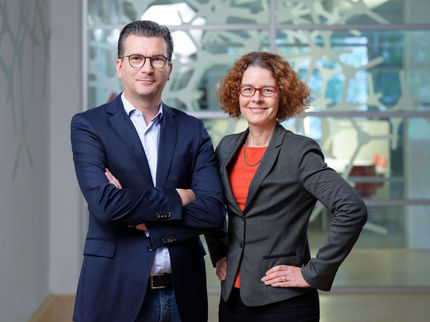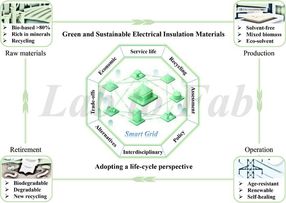Breakthrough in catalysis research: splitting CO2 with nickel
Ancient mechanism in bacteria elucidated - important findings for climate protection
Advertisement
Researchers at Technische Universität Berlin and Humboldt-Universität zu Berlin in the Cluster of Excellence Unifying Systems in catalysis (UniSysCat) have elucidated the molecular mechanism by which bacteria efficiently convert CO₂ into carbon monoxide. The study, published in the journal Nature Catalysis, shows for the first time all catalytically relevant states of the nickel-containing enzyme "carbon monoxide dehydrogenase" (CODH) in atomic resolution - a breakthrough for bioinspired catalysis and climate protection. If the knowledge gained in this way can be successfully transferred to the development of new types of catalysts, it could massively accelerate the transition to a carbon-neutral industry and green chemistry.
"It is fascinating that we can now observe this sophisticated process, which evolution has optimized over several billion years, very closely," says Dr. Christian Lorent from the Department of Physical and Biophysical Chemistry at TU Berlin. The success, which he achieved together with Prof. Dr. Holger Dobbek's "Structural Biology and Biochemistry" working group at Humboldt-Universität zu Berlin, builds on decades of preliminary work by dozens of working groups from many different countries. "Holger Dobbek alone has been working on this enzyme for more than 25 years. The big question was the exact function of the nickel-iron complex, which is hidden deep in the center of carbon monoxide dehydrogenase."
Nickel as the conductor of the reaction
"Bacteria use this dehydrogenase as a biological catalyst that enables the conversion of CO2 into CO as well as the reverse reaction," explains Christian Lorent. In the first case, the more reactive CO molecule formed can combine with other substances to form substances that are useful for the bacterium's metabolism. "If, on the other hand, the carbon monoxide is burned to carbon dioxide, energy is released that the bacterium can use." For the reactions, a nickel and an iron atom virtually take the gas molecules in their pincers. "The nickel ion can inject electrons into the CO2 molecule or absorb them from the CO This charged nickel atom also takes over the binding of the two molecules," explains Lorent.
Channels for molecules
Because the reaction center is extremely sensitive and the reaction must take place in the absence of oxygen, the nickel-iron complex is hidden deep inside the complex enzyme, which consists of several thousand atoms. The CO and CO2 molecules move through tailor-made channels - as if on conveyor belts - to the reaction center and out again. "Thanks to the atomic resolution, we can see really well how, for example, a CO molecule that has formed is still bound to the nickel and is already pointing in the direction of its channel," says Christian Lorent. The channels are designed in such a way that only the desired molecules can pass through them.
Structure meets spectroscopy: how the complete picture was created
Using state-of-the-art X-ray crystallography, infrared and electron spin resonance spectroscopy, the research team was able to visualize all intermediate states - from CO₂ binding and cleavage to the formation and release of CO. In order to study the enzyme using the X-ray crystallography method, the researchers first had to crystallize the giant molecules. This creates an ordered structure similar to that of salt crystals. "Only by combining this protein crystallography with the spectroscopic methods were we able to obtain a complete picture of all the reaction steps," explains Lorent. "This was the decisive advance that took our mechanistic understanding to a new level."
Relevance for climate protection and green chemistry
The findings go beyond basic research: they provide a blueprint for the development of synthetic catalysts that could selectively and efficiently convert CO₂ into valuable raw materials - for the chemical industry or synthetic fuels, for example. "By understanding the ancient mechanisms of bacterial CO₂ conversion, we can transfer them to the development of novel catalysts that could accelerate the transition to a carbon-neutral industry," says Yudhajeet Basak, first author of the study from Holger Dobbek's research group.
Note: This article has been translated using a computer system without human intervention. LUMITOS offers these automatic translations to present a wider range of current news. Since this article has been translated with automatic translation, it is possible that it contains errors in vocabulary, syntax or grammar. The original article in German can be found here.
Other news from the department science
Most read news
More news from our other portals
See the theme worlds for related content
Topic World Spectroscopy
Investigation with spectroscopy gives us unique insights into the composition and structure of materials. From UV-Vis spectroscopy to infrared and Raman spectroscopy to fluorescence and atomic absorption spectroscopy, spectroscopy offers us a wide range of analytical techniques to precisely characterize substances. Immerse yourself in the fascinating world of spectroscopy!

Topic World Spectroscopy
Investigation with spectroscopy gives us unique insights into the composition and structure of materials. From UV-Vis spectroscopy to infrared and Raman spectroscopy to fluorescence and atomic absorption spectroscopy, spectroscopy offers us a wide range of analytical techniques to precisely characterize substances. Immerse yourself in the fascinating world of spectroscopy!
































































